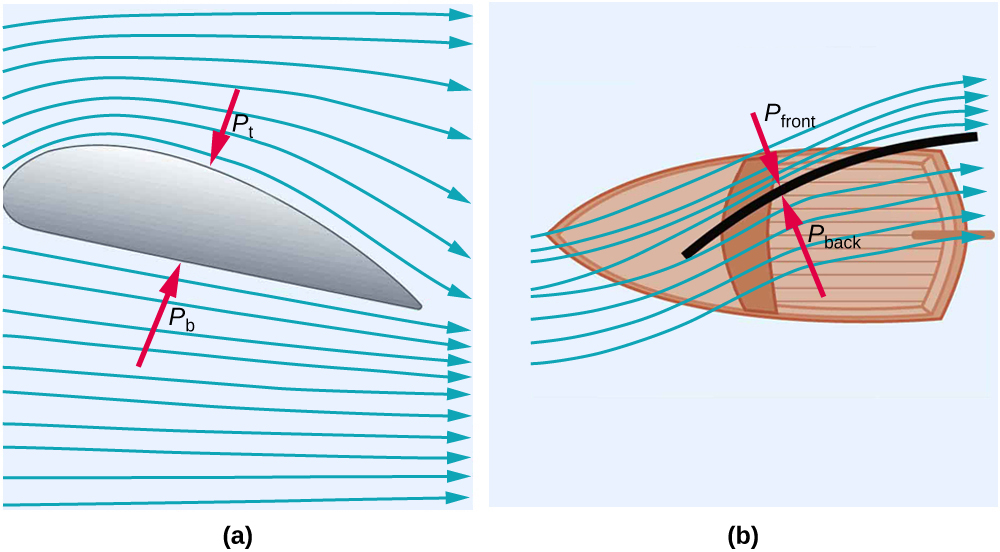| << Chapter < Page | Chapter >> Page > |
For a good illustration of Bernoulli’s principle, make two strips of paper, each about 15 cm long and 4 cm wide. Hold the small end of one strip up to your lips and let it drape over your finger. Blow across the paper. What happens? Now hold two strips of paper up to your lips, separated by your fingers. Blow between the strips. What happens?
[link] shows two devices that measure fluid velocity based on Bernoulli’s principle. The manometer in [link] (a) is connected to two tubes that are small enough not to appreciably disturb the flow. The tube facing the oncoming fluid creates a dead spot having zero velocity ( v1=0 ) in front of it, while fluid passing the other tube has velocity v2 . This means that Bernoulli’s principle as stated in P1+12ρv21=P2+12ρv22 becomes

Thus pressure P2 over the second opening is reduced by 12ρv22 , and so the fluid in the manometer rises by h on the side connected to the second opening, where
(Recall that the symbol ∝ means “proportional to.”) Solving for v2 , we see that
[link] (b) shows a version of this device that is in common use for measuring various fluid velocities; such devices are frequently used as air speed indicators in aircraft.

You can squirt water a considerably greater distance by placing your thumb over the end of a garden hose and then releasing, than by leaving it completely uncovered. Explain how this works.
Water is shot nearly vertically upward in a decorative fountain and the stream is observed to broaden as it rises. Conversely, a stream of water falling straight down from a faucet narrows. Explain why, and discuss whether surface tension enhances or reduces the effect in each case.
Look back to [link] . Answer the following two questions. Why is Po less than atmospheric? Why is Po greater than Pi ?

Notification Switch
Would you like to follow the 'College physics' conversation and receive update notifications?